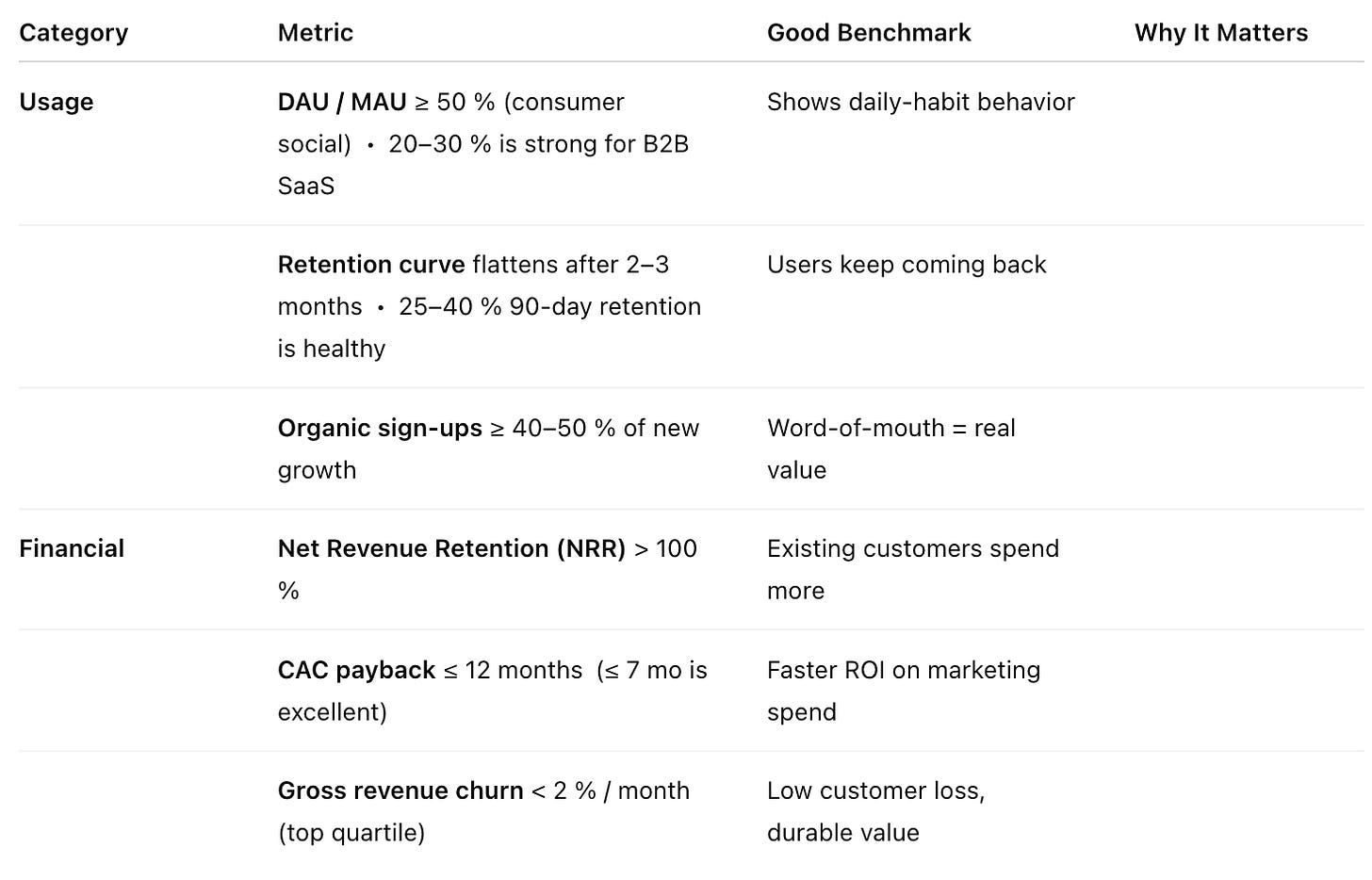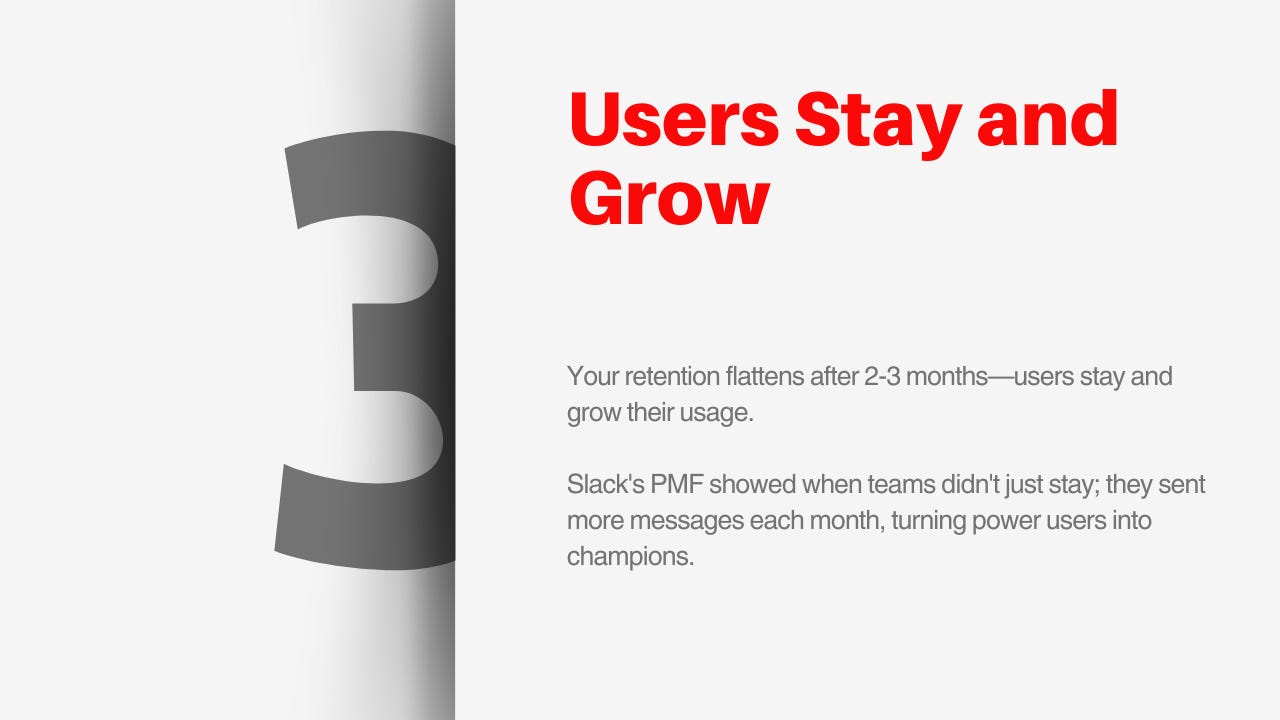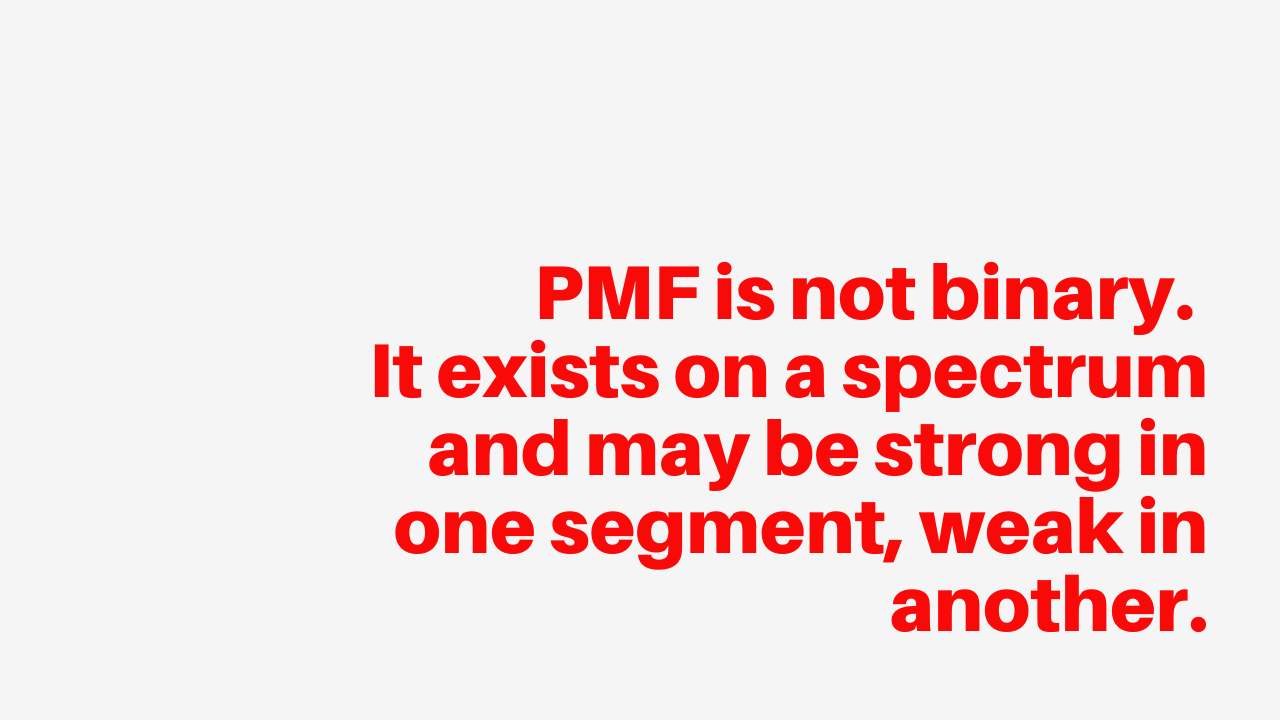I’ve looked at more than 2,000 startup decks as a solo GP. The quickest way to sink a promising company is to chase growth before you lock in Product-Market Fit (PMF).
Use this straightforward playbook I’ve learned along the way. I added the checklist pdf at the end of the post
What Is Product-Market Fit?
Product-Market Fit happens when your product solves a pressing need for a clearly defined customer segment and delivers unmistakable value. Andy Rachleff coined the term; Marc Andreessen popularized it, calling PMF “being in a good market with a product that can satisfy that market.”
Key Indicators of PMF
1. Quantitative
2. Qualitative
Customer behavior
Users recommend the product unprompted.
≥ 40 % would be very disappointed if it disappeared (Sean Ellis Test).
Support tickets move from how to use to how to do more.
Sales cycles shorten and become predictable.
Market response
Competitors start copying features.
Analysts and media show organic interest.
Inbound partnership requests rise.
Top talent wants to join the team.
How to Measure PMF
Sean Ellis Test → Ask: “How would you feel if you could no longer use [product]?”
Target: ≥ 40 % answer “Very disappointed.”NPS (Net Promoter Score) → “On a scale of 0–10, how likely are you to recommend [product]?”
Target: NPS > 50 signals strong PMF.Customer interviews → Dive into discovery, use cases, benefits, pain points, and alternatives.
Common Misconceptions
Signs You Haven’t Found PMF Yet
High churn or low engagement
Long, unpredictable sales cycles
Extreme price sensitivity
Limited word-of-mouth referrals
Internal disagreement on target customer or product direction
Steps to Reach PMF
Define the target market: Segment customers, list pains, map alternatives.
Build an MVP: Deliver only the core value; instrument analytics from day one.
Gather data continuously: Track metrics, interview users, monitor support, collect NPS.
Iterate ruthlessly: Prioritize fixes by user impact; run experiments; pivot if needed.
Scale deliberately: Serve one segment perfectly before expanding next door.
Action Items for Founders
Set up tracking
Implement analytics
Create customer feedback loops
Monitor key metrics
Regular assessment
Monthly metric reviews
Quarterly strategic planning
Annual market analysis
Build feedback channels
Customer advisory board
Regular user interviews
Automated feedback collection
Team alignment
Weekly customer feedback sharing
Monthly metric reviews
Quarterly strategy updates
Maintaining & Expanding PMF
Market checks → Track competitors and trends.
Continuous product evolution → Ship valuable features, UX and performance upgrades.
Team alignment → Share customer feedback widely; keep the core value front-and-center.
Documentation → Record key decisions; create playbooks for repeatable wins.
Your Simple PMF Routine
Every week
Share the latest customer feedback with your team.Every month
Review your key numbers—retention, growth, churn.Every quarter
Step back and check: Are we still solving the right problem for the right people?Every year
Re-scan the market and adjust your plan if needed.
Closing note:
Last week I jumped on a video call with Sam, the founder of Devo POS and one of my favourite portfolio founders. We do these check-ins every quarter. When we first invested, his product had just launched. A year ago I ran the PMF test above and told him, “You’ve found fit—soon you won’t be able to keep up with demand, so start planning for scale.”
Back then he hadn’t seen it. This time he showed me a map covered with pins marking every new location using the product.
The growth was incredible. We quickly shifted to the next challenge: building a larger sales team. With traction like this, raising the next round should be the easy part.
Stay patient, stay focused, and remember: once you achieve real PMF, everything else gets easier.
Check my linkedin post about PMF
Download PMF Checklist for Founders














Does PMF come faster or slower for different industries?
PMF - When Investors Loose their Minds and Lean In Hard 🎯